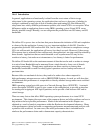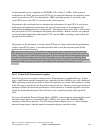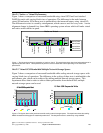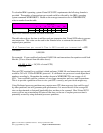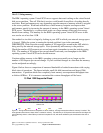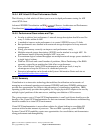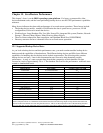
To calculate IBM i operating system Virtual SCSI CPU requirements the following formula is
provided. The number of transactions per second could be collected by the IBM i operating
system command WRKDSKSTS. Based on the average transaction size in WRKDSKSTS,
select a number from the table.
2821488254362621Write
3141639257342216Read
Type of Transaction
25612864321684
Size of IO
Figure 5- CPU milliseconds to process virtual SCSI I/O transaction
The table above shows the time in milliseconds per transaction that Virtual SCSI takes to process
one transaction. This value can be used in the formula below to estimate the amount of CPU
required per a partition.
(# of Transactions per second * Time in Milliseconds per transaction)
= CPU
Utilization
1,000,000
For example.. If your workload performed 10,000 16k read transactions the equation would look
like this (34 was selected from the table above):
(10,000 * 34) = .34(34% of a total CPU)
1,000,000
The total CPU required for a workload, which performs 10,000 16k read transactions per second,
would be 34% of a 2.2Ghz POWER5 processor. If a different size processor is used adjust these
numbers accordingly. Remember the number chosen in WRKDSKSTS is an average of all
I/O’s. Your workload could be a mixture of very large transactions and very small transactions.
This is to provide a guideline of how to size your CPU correctly, and your results might vary.
Using Dedicated processor partitions may require more CPU then necessary that could be used
by other partitions, but will guarantee peak performance. It is most effective if the average I/O
size can be estimated so that peak bandwidth does not have to be assumed. Most Virtual SCSI
servers will not run at maximum I/O rates all the time, so the use of surplus processor time is
potentially wasted by using dedicated processor partitions.
IBM i 6.1 Performance Capabilities Reference - January/April/October 2008
© Copyright IBM Corp. 2008 Chapter 14 DASD Performance 239





